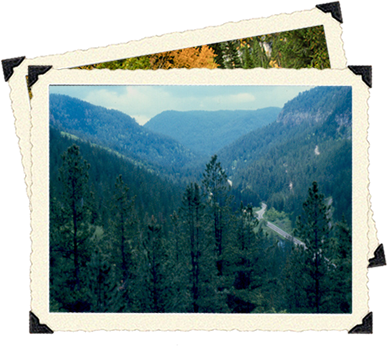 Location Location
The Black Hills rises from a sea of grass encompassing the northern plains of South Dakota and Wyoming. The Black Hills is a mountain range that could today have reached an elevation of 15,000 feet, but the constant erosion of the soft oceans’ deposits have left a range 7,200’ high. Along Interstate 90, Rapid City to the south and Spearfish to the north, serve as gateways to this unique outcropping of a black silhouette against the prairie sky.
The View
Spearfish Canyon is one of the oldest and most miraculous canyons in the west. Located in the northern portion of the Black Hills National Forest, the canyon spans 20-miles along a scenic and unique State and National Scenic Byway. Less than a mile wide, the canyon is always ‘close and upward’ dwarfing the one-million annual visitors.
Link to Black Hills National Forest - USDA Forest Service.
Geology
Geologist point to the origin of the canyon about 62-million years ago, but through repeated invasion of shallow oceans and resulting deposits, most of today’s gorge represents erosion activities from nearly 5-million years ago. Geologists note that the canyon is 12-times older than the Grand Canyon with rocks of similar age.
Ecology
Frank Lloyd Wright, America’s renowned organic architect, proclaimed Spearfish Canyon as ‘the’ most magnificent canyon in the west in his visit of 1935. He stated that had this canyon been on the throughway to the west”, it would today be as appreciated and recognized as the Grand Canyon. Much of its magnificence according to Wright is the convergence of four vegetation communities amongst the towering high walls and rushing waters of Spearfish Creek. Much of the Canyon’s pristine ecology is contained in the seventeen isolated side-gulches. |


